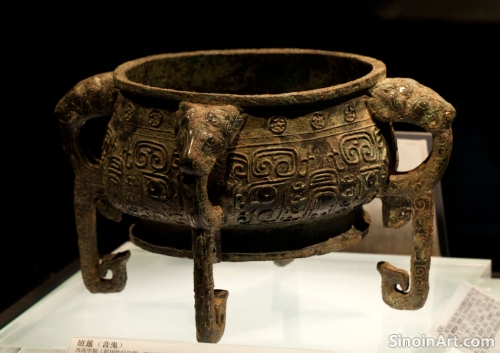Bronze and the Development of Early Chinese Astronomy: Tools of Observation and Understanding
|
Beyond the decorative and ritualistic roles, bronze also played a crucial part in the development of ancient Chinese astronomy. The creation of bronze instruments, including armillary spheres and sundials, helped to facilitate the study of the cosmos, allowing for more accurate observation, calculation, and the development of a more comprehensive understanding of the universe. The use of bronze helped to unlock a more accurate understanding of the skies.  Bronze armillary spheres, which modeled the positions of celestial bodies, were essential for plotting the movements of the planets and stars. The use of bronze made for durable and precise instruments that could stand the test of time. These instruments were a testament to the technological capabilities of the period.  Bronze sundials were also used to measure time, playing an important role in the development of early calendars and timekeeping systems. These instruments helped with the daily organization of life in ancient China. The use of bronze in these objects helped to solidify its importance in both the artistic and scientific worlds.  The careful design of these bronze astronomical tools, often featuring inscriptions and precise calibrations, reflects the integration of artistic skill and scientific knowledge. These instruments were not only highly functional, they were also aesthetically pleasing objects. The craftsmanship that went into these instruments shows a clear connection to traditional artistic practices. The study of bronze instruments from ancient China provides insights into the astronomical knowledge and worldview of the time, highlighting the intertwined nature of science, technology, and artistic expression. The use of bronze helps to create a more nuanced understanding of ancient Chinese life. |
Tag : bronze astronomy tools, Chinese instruments, ancient cosmology, sundials, armillary spheres
Related information
- The Influence of Bronze Ware on the Development of Chinese Seal Carving
- The Archaeological Significance of Chinese Bronze Ware: Discoveries and Insights
- Beyond Bronze: Other Materials Used in Conjunction with Bronze Ware
- Bronze Ware and Ancient Chinese Astronomy: Celestial Charts and Observational Tools
- The Influence of Tang Dynasty Aesthetics on Later Bronze Ware Design
This article explores the influence of bronze ware on the development of Chinese seal carving, highlighting the shared techniques, the stylistic similarities, the transmission of decorative motifs, and the interconnectedness of these two art forms.
This article explores the archaeological significance of Chinese bronze ware, highlighting the discoveries at various sites, the insights gained into ancient society, metallurgy, trade, and the overall contribution to our understanding of early China.
This article explores the materials used in conjunction with bronze ware in ancient China, highlighting the use of jade, bone, shell, and wood to create more complex and multifaceted objects, showcasing the versatility of ancient craftsmanship.
This article explores the use of bronze in ancient Chinese astronomy, focusing on the creation of armillary spheres, sundials, and other observational tools, demonstrating the integration of art, technology, and the ancient quest to understand the cosmos.
This article explores the influence of Tang Dynasty aesthetics on later bronze ware design, highlighting the shift toward more refined forms, delicate decorations, naturalistic motifs, and how these changes reflected a broader change in cultural tastes.